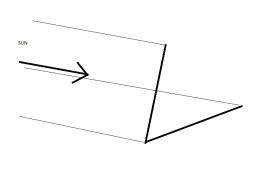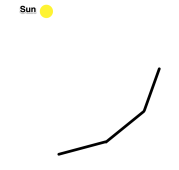WattAboutThat
New Member
- Joined
- Dec 15, 2021
- Messages
- 123
IDEA for Consideration and Requesting your Feedback on this concept:
Instead of have a flat surface where all solar panels are on the same surface plane,
What if we were to create a
Top Row in Series,
and Angled to Maximize Winter Sun Angle,
then a
Bottom Row in Series,
and Angled to Maximize Summer Sun Angle,
then a
Middle Row Angled to Split the two angles
such that winter sun will be reflected down
towards summer angled panels in bottom row
and summer sun will be reflected up
towards winter angled panels
and all horizontal edges from each row are lined up so no shadows occur on other rows
it would require a different set of posts for each row at properly calculated height to achieve
but would maximize power throughout the year
the curve from top to bottom
would be like a parabola
or similar to those sun baking devices
that concentrates the sun on a tube to heat water etc
would need to calculate best angles to get max reflection between rows to determine focal point that works best
any ideas on this subject
or ways to improve it are invited
thx
Instead of have a flat surface where all solar panels are on the same surface plane,
What if we were to create a
Top Row in Series,
and Angled to Maximize Winter Sun Angle,
then a
Bottom Row in Series,
and Angled to Maximize Summer Sun Angle,
then a
Middle Row Angled to Split the two angles
such that winter sun will be reflected down
towards summer angled panels in bottom row
and summer sun will be reflected up
towards winter angled panels
and all horizontal edges from each row are lined up so no shadows occur on other rows
it would require a different set of posts for each row at properly calculated height to achieve
but would maximize power throughout the year
the curve from top to bottom
would be like a parabola
or similar to those sun baking devices
that concentrates the sun on a tube to heat water etc
would need to calculate best angles to get max reflection between rows to determine focal point that works best
any ideas on this subject
or ways to improve it are invited
thx





